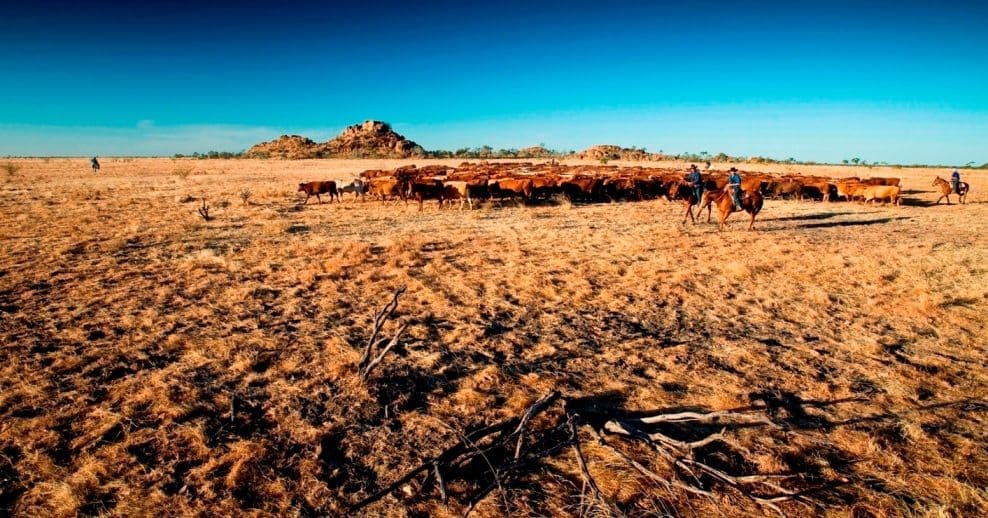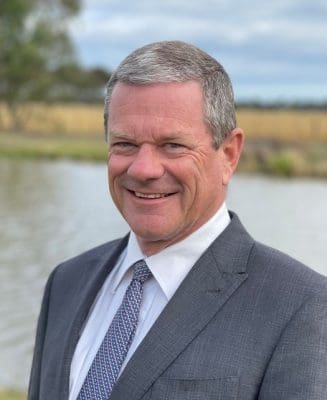
RURAL property specialists have dismissed the recently-updated Foreign Investment Review Board’s register of foreign ownership of Australian agricultural land as being misleading and too simplistic.
The agricultural land register was established in 2015 to provide greater transparency about the level of overseas investment in Australia’s farmland.
The most recently updated FIRB report, for the 2019-20 year, was released in December.
It is important to note the register records foreign person entities that own a 20pc or more share in Australian farmland. This means there may also be a significant portion of Australian ownership in those same parcels of land.
As an example, China’s Shanghai CRED owns 33pc of S. Kidman & Co, with Gina Rinehart’s Hancock beef controlling the remaining 67pc – yet Shanghai Cred is credited by FIRB with a land holding of S.Kidman’s entire 80,000sq km area.
For the second consecutive year, China remains the largest foreign owner of Australian agricultural land, by area.
China holds a 2.4 percent share or 92,000sq km – a 46,000ha increase on the previous year, followed by the United Kingdom with 2.1pc or 81,600sq km – after divesting 860,000ha.
Owning 0.7pc of Australian farmland each, the Netherlands currently holds 28,000sq km, the United States 27,500sq km (up 525,000ha) and Canada 26,100sq km.
These figures demonstrate that more recent investment from China is significantly lower than from some other countries.
While China is the biggest investor because it owns more land than any other country, the FIRB figures refer to scale, not output, which NSW property sales identity Bruce Gunning from Ray White Rural International claims is misleading.
“An investor can purchase large tracts of poorer country very cheaply on a per hectare basis, but what is the value of that investment?” he asked.
Mr Gunning cited two Australian-Chinese joint ventures involving large areas of land, where the enterprise is not necessarily the most valuable or the most productive.
- In 2019, Macquarie Bank acquired 49pc of Cubbie Station (the largest irrigation property in the southern hemisphere, near Dirranbandi, in Queensland’s south west), while the Chinese-owned Shandong Ruyi retains a 51pc share.
- In 2016, Gina Rinehart, together with Shanghai CRED, secured cattle empire Kidman & Co. Ms Rinehart’s Hancock Beef owns a 67pc share in Outback Beef, while the Chinese partner holds 33pc.
David Goodfellow, CBRE Agribusiness head
CBRE’s agribusiness head David Goodfellow agrees.

David Goodfellow
“The purchase of S. Kidman & Co through a joint venture between Gina Rinehart and China’s Shanghai CRED gave the Chinese ownership of a lot of land. However, it is nowhere near as productive as some of the investments that the Canadians and Americans have made in Australian farmland,” he said.
Mr Goodfellow said while the Chinese may be the biggest foreign landowners in Australia in terms of area, they are not in terms of value or production.
“Looking at total dollars invested and the return on those investments (in terms of total productivity), the Canadians and Americans have been much more active in Australian agriculture over the last four years than the Chinese.”
“Many North American investors have focussed on cropping and horticulture. And of course, that land is much more valuable on dollars per hectare basis than extensive livestock land is because the value of production is so much higher.”
“While China processes both Australian cotton and Australian wool and as a result has invested in our cotton and wool industries, it is much more active in the livestock space,” Mr Goodfellow said.
Tom Russo, Elders General Manager property
Tom Russo, who heads up Elders’ real estate division, believes the FIRB should focus on value of land, more than area.

Tom Russo
“The FIRB farmland register should be viewed with a pinch of salt because an investor can own a much larger area (on a per hectare basis), but their level of production of agricultural outputs might be significantly lower,” he said.
Mr Russo said the output of pastoral country versus horticulture or intensive agriculture land was very different.
“People shouldn’t get upset about the number of hectares, because output is a more meaningful measure than scale.”
He isn’t surprised that China is the biggest foreign landholder in Australia.
“An enormous level of Chinese capital was deployed into Australian agriculture. However, over recent years, that investment has dramatically decreased and as a result, the level of Chinese ownership today is significantly lower.”
Mr Russo said in recent years, the weight of capital entering Australian agriculture had come from North America.
“China retains the top position by reason of its historical investments, however the level of new investment from there is low and dwarfed by the capital being deployed from institutional and managed funds from the US and Canada.”
Their investment is mostly in dryland cropping and intensive agriculture (such as permanent tree crops and horticulture) and the FIRB figures confirm this – the biggest rise in foreign investment was in cropping properties which rose 8.8 percent from June 2019 to June 2020.
Mr Russo said what he is observing in the marketplace is certainly playing out in the data.
“The key point is the incremental growth, in recent years, is coming out of the United States and Canada, and that is where we are seeing the weight of capital coming from.”
Chinese boom over
Interestingly, the latest ‘Demystifying Chinese Investment in Australia’ report, by KPMG and the University of Sydney’s Business School, found China’s investment boom cycle in Australian and global agriculture appeared to be over.
It recorded a sharp decline in both the value and number of transactions by Chinese investors into Australia in 2019 (all investments – not just ag land), and it did not expect large-scale investment by new Chinese entrants to continue in the short to medium term.
More shortcomings
The latest register of foreign ownership of agricultural land identified that more than 85pc of foreign-owned agricultural land in Australia is used for livestock. The figure of 45.31 million hectares was up 1.6pc on the previous year.
Elders’ Tom Russo said it was difficult to make sense of that finding.
“It does not provide any breakdown or segmentation. It fails to identify how much is northern Australia pastoral versus high rainfall, high value, east coast grazing country,” he said.
CBRE’s David Goodfellow said FIRB’s figures were calculated on a per hectare basis, and lacked relevance.
“Vast tracts of the Northern Territory and Queensland cannot be used for anything other than livestock production. This includes the Kidman country and northern parts of South Australia.”
“The industry is more interested in how many dollars have come into Australian agriculture and what that is doing in terms of the value of production created from that investment,” Mr Goodfellow said.
Foreign investment virtually unchanged
According to data in the FIRB’s latest report, the level of foreign ownership in Australian ag land has remained relatively stable over the past five years.
It increased 1.7pc of farmland area (900,000 ha) from 521,000sq km at 30 June 2019 to 530,000sq km a year later.
RWR’s Bruce Gunning described it as a progressive barn dance: “A few people change partners, but not much has changed.”
Leasehold
Around 83pc of land deemed foreign owned is held by foreign investors on a leasehold basis – 450,000sq km, which is a 1pc increase on the previous year.
China holds more leasehold land than any other country ( 83,700sq km), followed by the United Kingdom at 72,800sq km, the Bahamas at 22,000sq km, Germany 19,300sq km and Switzerland 18,200sq km.
Freehold
The Netherland holds the majority of freehold land at almost 167,000sq km, followed by the United States (131,000sq km), Canada 91,000sq km), the United Kingdom 882,000ha and China 824,000ha.
As of June 30 last year, of the 53.026 million hectares of Australian agricultural land, 25.6pc (13.59m ha) was held by Australian investors who have shares in foreign person entities.
When compared to the previous year, there has been a 2.8pc increase in the foreign share proportion of the foreign held land, and a 1.3pc reduction in the Australian share of foreign held land.
A closer look at foreign ownership
Foreign investment increased in every Australian state during 2019-2020 and while Tasmania led the way, the Northern Territory experienced the largest increase in terms of area with 411,000ha, followed by Queensland with 234,000ha.
In the Northern Territory, more than 25pc of pastoral land or 147,000sq km (+2.9pc) is now held by foreign investors, followed by 12pc of Queensland or 157,000sq km (+1.5pc) and 17pc of Western Australia or 139,000sq km (+0.7pc).
Foreign investment in South Australia spans 4.95 million hectares (+.01pc), New South Wales and the Australian Capital Territory 2.660 million ha (+4pc), Victoria 639,000ha (+3.4pc) and Tasmania 382,000ha (+7.3pc).

I’m trying to get my head around the new tariffs imposed by America. So I’ve been reading, if china own significant shares in companies such as mining, agriculture, beef industry etc and these countries are using Australia export taxes which have been low, is this why Trump has imposed higher tariffs on Australia as that money is going back to china, therefore China is getting the cheaper export tariffs and Trump is now saying they have to pay and this is the fall off that is hurting us by allowing china to own more that 50per cent and in some cases mire if the above mentioned industries, or am I barking up the wrong tree. Trying to understand how it all works I’m just the average Joe
There’s a lot of creative thinking going on since the tariffs were announced. We haven’t heard that one, but remember Chinese ownership in Australia is miniscule, compared with the overall economy. Editor
It is bloody disgusting that our government are selling off our land. We can’t buy land in china we need a government with balls like the new Zealand government
Our policy on foreign land ownership in this country should be the same that applies to us in their country. We can’t invest in their land they can’t invest here. Equal playing field.
Good reading thank you
All property in Australia should be owned or controlled by persons holding only Australian citizenship and residing in Australia for most of the year.
I definitely agree, although its said that a lot of the land is not good agriculturly it is still a large amount of land owned by them which they could do whatever they want with…
The Island off Queensland where people have homes but a Chinese invester has closed the National park which should be open to the public and closed the small airstrip, even stopped B n B owners from having clients …BECAUSE THEY HAVE THE BIGGEST PERCENTAGE OF FREEHOUSE LAND THEY CAN DO THIS…
WHOSE COUNTRY IS THIS…
Having foreign ownership of ag land means entitlement to water alocations…..here lies OUR delima in a land strained with lack of good water.